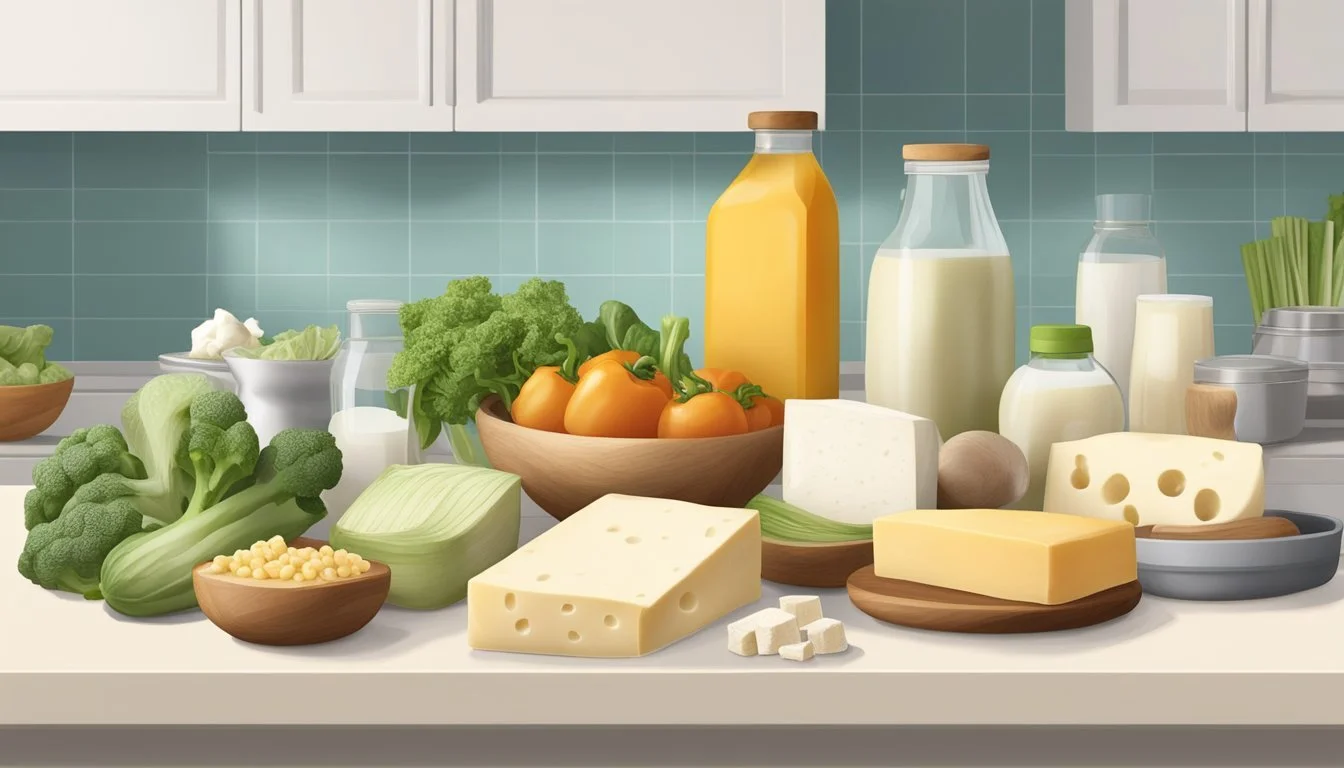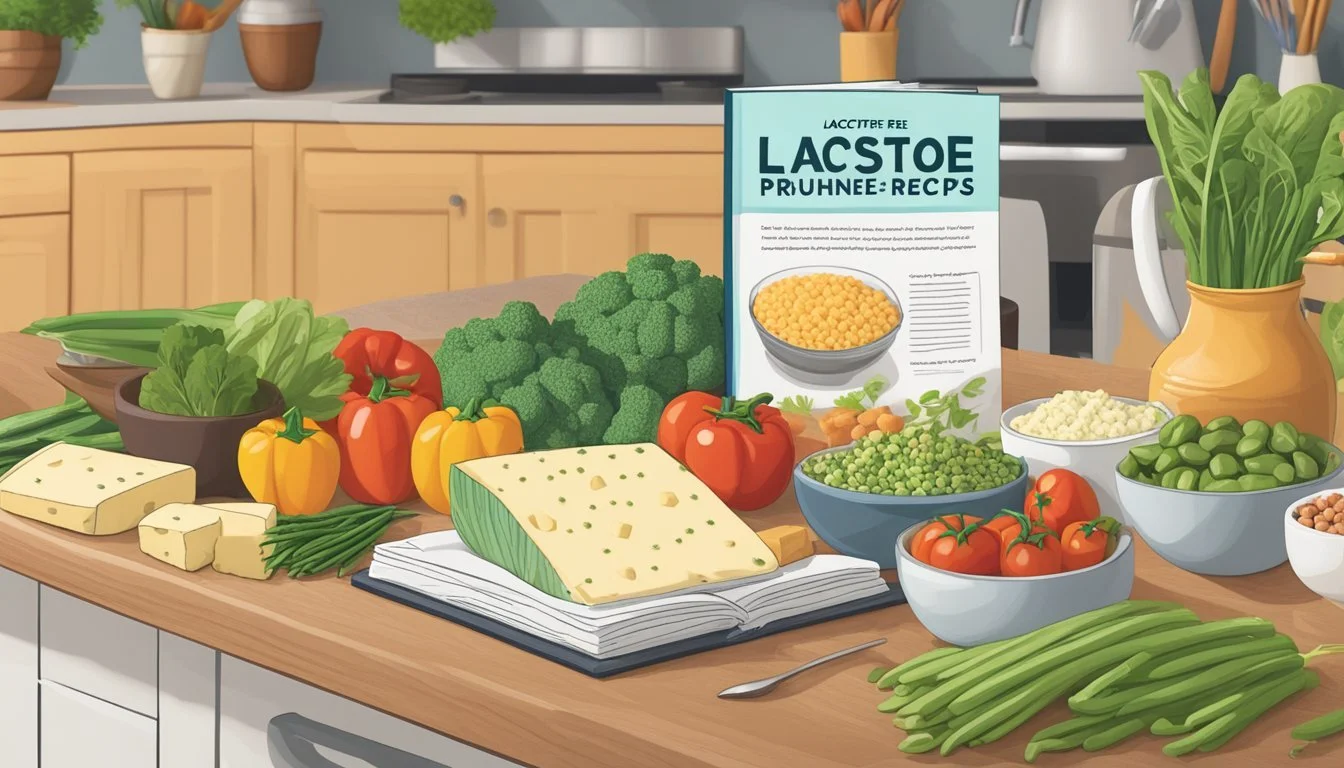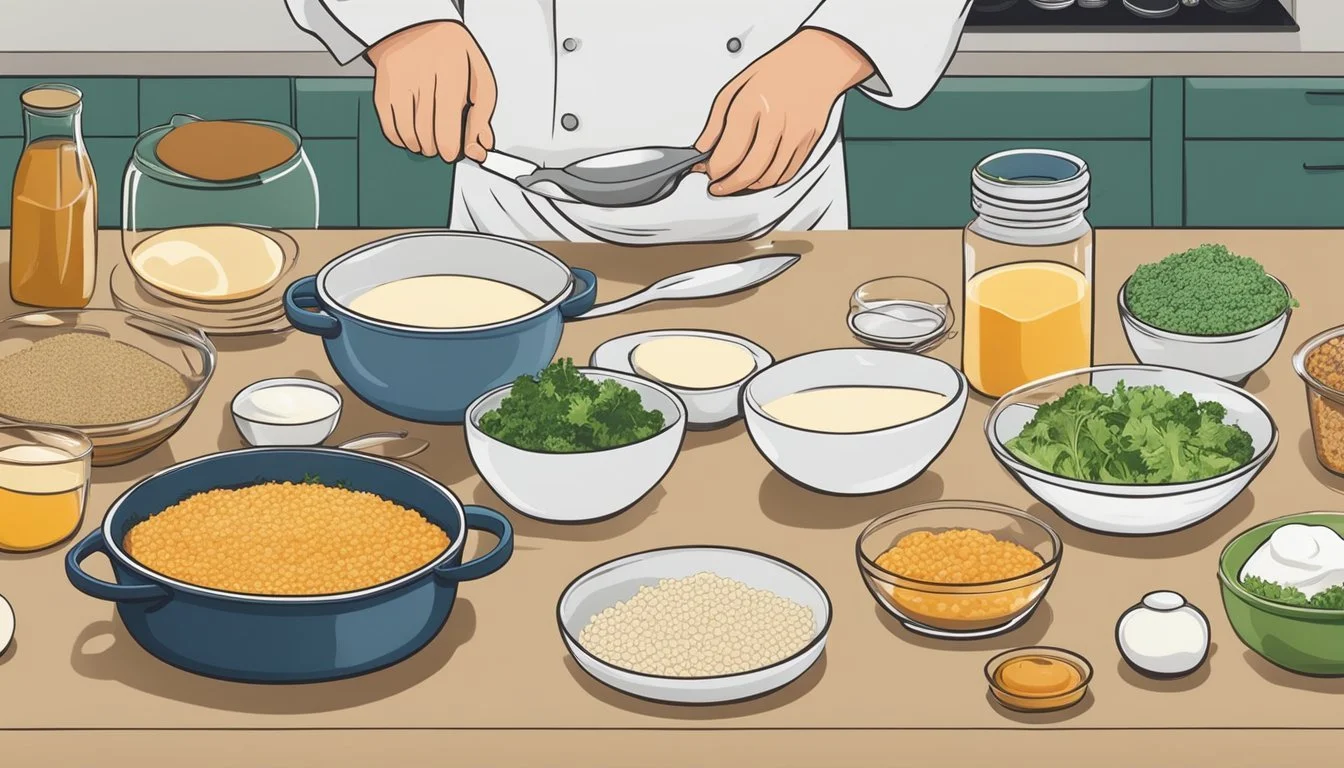What Are Some Lactose-Free Casserole Recipes?
Top Dairy-Free Comfort Foods Revealed
Casseroles are a comfort food staple in many households, known for their convenience and heartiness. Typically rich in dairy products like cheese and milk, traditional recipes can be off-limits for those with lactose intolerance or anyone following a dairy-free diet. However, there are plenty of ways to adapt these one-dish wonders to exclude lactose without compromising on flavor or texture.
The key to a successful lactose-free casserole lies in the substitution of dairy ingredients with alternatives that maintain the dish's integrity. Non-dairy milks such as almond, soy, or oat milk can replace cow's milk, while nutritional yeast and lactose-free cheese options are available to mimic the savory flavor of traditional cheese. Creative use of herbs, spices, and other flavorful ingredients also helps in enhancing the taste profile of dairy-free casseroles.
These adaptations open up a world of possibilities for those avoiding lactose, from vegetable bakes and protein-packed entrees to internationally inspired dishes. Recipes for dairy-free casseroles often involve a mix of vegetables, proteins, and complex carbohydrates, making it simple to achieve a balanced and satisfying meal. Whether prepped ahead for busy weeknight dinners or assembled for a leisurely weekend brunch, lactose-free casseroles can be as diverse and appetizing as their dairy-containing counterparts.
Understanding Lactose-Free Eating
Lactose-free eating involves substituting dairy products with alternatives that do not contain lactose, and it often yields health benefits for those with specific dietary needs or food allergies.
Basics of Dairy-Free Ingredients
When one adopts a lactose-free diet, they must identify suitable substitutes for dairy products. Dairy-free means the food contains no dairy whatsoever, and is often synonymous with vegan options, which are derived from plants or nuts. On the contrary, lactose-free products are modified dairy items where lactose, the sugar found in milk, has been removed. The range of alternatives includes:
Soy, almond, rice, and coconut milks
Dairy-free cheeses made from nuts or soy
Coconut oil or vegan butters as substitutes for butter
It is essential to check labels carefully, as some products may be free of lactose but not dairy-free.
Benefits of a Lactose-Free Diet
A lactose-free diet is beneficial for individuals with lactose intolerance, preventing symptoms like bloating, gas, and abdominal pain. The benefits often extend to improved digestion and overall gastrointestinal health. For those with a milk allergy, which can cause more severe reactions than lactose intolerance, removing dairy from their diet is critical. The positive impacts of a lactose-free diet include:
Digestive Comfort: Reduction in digestive discomfort for those intolerant to lactose.
Allergy Management: Essential for managing symptoms and avoiding severe allergic reactions.
Potentially Lowered Inflammation: Some studies suggest that for certain individuals, dairy can contribute to inflammation; a dairy-free diet might mitigate this effect.
Special Diet Notes and Food Allergies
On a lactose-free or dairy-free diet, vigilance is required to avoid unintentional consumption of lactose or dairy, which can be prevalent in processed foods. Reading ingredient lists is necessary to ensure compliance with dietary restrictions, especially for those with food allergies. Special diet notes for individuals exploring a lactose-free diet include:
Always check for hidden sources of dairy or lactose in processed foods.
Understand the difference between lactose-free and dairy-free when shopping.
Consider working with a dietitian to ensure nutritional adequacy.
For many, embracing a lactose-free diet is a step towards managing dietary restrictions with confidence while enjoying a diverse and satisfying array of foods.
Lactose-Free Casserole Ingredients
To create delectable lactose-free casseroles, one must master the use of non-dairy alternatives, incorporate gluten-free options where necessary, utilize healthy fats for richness, and consciously select low-sodium and low-sugar components for balanced flavor.
Selecting Non-Dairy Alternatives
Non-dairy alternatives are essential for lactose-free casseroles. Coconut milk and almond milk serve as excellent replacements for milk in recipes, providing the necessary liquid and creaminess without lactose. Similarly, non-dairy cheese substitutes can be used for the desired meltiness and flavor. Non-dairy alternatives should mimic the taste and texture of their dairy counterparts as closely as possible to ensure success in lactose-free recipes.
Milk Replacements:
Coconut milk
Cheese Alternatives:
Nutritional yeast for a cheesy flavor
Opting for Gluten-Free Options
Gluten-intolerance often accompanies lactose intolerance, making it beneficial to use gluten-free ingredients in lactose-free casseroles. Gluten-free options such as rice, quinoa, and gluten-free pasta are excellent bases for casseroles. Gluten-free flour mixes can replace traditional flour for thickening sauces.
Gluten-Free Bases:
Quinoa
Gluten-free pasta
Healthy Fats and Substitutes
Healthy fats like olive oil and coconut can replace butter in casseroles to bring depth and richness. Olive oil is especially valuable for sautéing ingredients, while coconut oil can serve as a butter substitute in baking and sauce preparations. These fats are not only healthier but also free from lactose, making them ideal for lactose-free cooking.
Healthy Fat Options:
Olive oil
Coconut oil
Choosing Low-Sodium and Low-Sugar Items
Monitoring sodium and sugar intake is crucial for a well-balanced diet. Low-sodium vegetable broth and fresh herbs can enhance flavor without the need for excess salt. Additionally, opting for natural sweeteners or just a small amount of sugar can ensure that the overall dish remains both flavorful and healthier.
Flavor Enhancements:
Low-sodium vegetable broth
Fresh herbs
Sweetness Modifiers:
Natural sweeteners: honey, agave
Minimal use of sugar
Types of Lactose-Free Casseroles
Lactose-free casserole recipes offer a diverse range of options suitable for various meals throughout the day. From egg-based breakfast dishes to hearty vegetable side casseroles, these recipes provide flavorful alternatives for those avoiding dairy.
Breakfast Casseroles
For a satisfying start to the day, lactose-free breakfast casseroles often incorporate eggs as the main ingredient. French toast casseroles can be made with lactose-free milk and bread, creating a delicious and sweet morning treat. Another staple is the breakfast casserole combining eggs, lactose-free sausage or turkey, and vegetables, baked to perfection for a fulfilling meal.
Main Course Casseroles
Lactose-free main course casseroles are hearty and flavorful. These often center around proteins like turkey, beef, or vegan alternatives, intermingled with an array of veggies such as mushrooms or sweet potatoes. A popular option is a dairy-free green bean casserole, utilizing homemade mushroom soup and crispy onions for topping.
Sides and Vegetable Casseroles
Side dish casseroles without lactose can focus on a single vegetable like green beans, or combine several like carrots, cauliflower, and brussels sprouts. A dairy-free twist on a classic is the sweet potato casserole, with alternatives like coconut milk and nut butter adding richness without the need for dairy.
Dairy-Free Desserts and Sweet Casseroles
Ending the meal with a dairy-free dessert casserole such as pumpkin pie or a fruit casserole satisfies the sweet tooth without lactose. Ingredients such as almond milk, coconut cream, and dairy-free whipped toppings can substitute for their dairy counterparts, providing indulgent flavors in every bite.
Casserole Preparation Techniques
Creating a lactose-free casserole involves careful selection of substitutes that maintain the dish's flavor and texture. Mastering the baking process is crucial for a delicious outcome.
Baking the Perfect Casserole
A well-prepared casserole should be baked evenly, resulting in a dish that’s cooked thoroughly with a desirable golden brown top. To achieve this:
Preheat the Oven: Always start with a preheated oven to ensure consistent cooking. The baking dish should be placed in the center of the oven to allow for even heat distribution.
Choose the Right Baking Dish: Casseroles are typically baked in glass or ceramic dishes. These materials conduct heat well and contribute to an even bake. Metal pans can also be used, but they may cook edges faster.
Lactose-Free Substitutes: When adapting recipes, use lactose-free alternatives like almond milk, coconut milk, or lactose-free cheese to maintain the creamy texture without the lactose.
Proper Layering: Ingredients should be layered evenly, starting with a solid base and building up to lighter components on top. This ensures that heavier ingredients don’t sink during the baking process.
Use Fresh Herbs: Incorporating fresh herbs like parsley or thyme adds a burst of flavor. They should be sprinkled on top or mixed in with other ingredients before baking.
Monitor the Baking Time: Cooking times vary depending on the recipe and oven. A casserole is typically done when it’s bubbly around the edges and golden brown on top.
Let it Rest: After removing from the oven, let the casserole sit for a few minutes. This allows it to set and makes it easier to serve.
By utilizing these techniques, one can ensure that their lactose-free casserole is not only cooked properly but also full of flavor.
International Lactose-Free Casseroles
Exploring the flavors of the world, lactose-free casseroles can be delightfully varied, from the zesty lemon chicken of the Mediterranean to the rich, spicy peanut sauces of Asia, and the savory-sweet pork and apple tamales of Latin America.
Mediterranean and European Influence
The Mediterranean region offers a bounty of tastes that are naturally lactose-free. One can savor a Mediterranean Lemon Chicken Casserole, where succulent chicken is bathed in a lemon-infused olive oil sauce, garnished with fragrant herbs like rosemary and thyme. The use of citrus and herbs brings out the fresh flavors without the need for dairy.
Key Ingredients:
Chicken
Lemon juice
Olive oil
Rosemary
Thyme
Italians have mastered the art of hearty meals without lactose by turning to vegetables as their centerpiece. A prime example is a Hearty Spaghetti Squash Casserole, offering an alternative to traditional pasta dishes. The squash strands mimic the texture of spaghetti, creating a satisfying base that pairs well with a variety of savory sauces.
Ingredients:
Spaghetti squash
Tomato sauce
Garlic
Basil
Asian-Inspired Casseroles
Asian cuisine presents a treasure trove of lactose-free alternatives. Dishes like a Thai-Inspired Spicy Peanut Sauce Casserole merge the sweet and spicy notes of red curry paste and the creamy richness of coconut milk without the inclusion of dairy. The punch of ginger within the dish adds both a zing and a note of warmth that is characteristic of many Asian recipes.
Ingredients for Spicy Peanut Sauce:
Peanut butter
Coconut milk
Red curry paste
Ginger
Thai Pasta Casserole, utilizing rice noodles in lieu of wheat pasta, is a fusion dish accented with vibrant veggies and drenched in a tantalizing Thai sauce that promotes the creamy texture often desired in casseroles without resorting to dairy.
Notable Ingredients:
Rice noodles
Bell peppers
Carrots
Soy sauce
Latin American Favorites
Latin American cuisine warmly embraces the essence of comfort food with lactose-free options. The Pork and Apple Tamales dish is an exquisite example where seasoned pork is combined with sweet apples and steamed inside corn husks, resulting in a tantalizing blend of sweet and savory.
Ingredients to highlight:
Pork
Apples
Corn masa
Chili peppers
Each dish beautifully demonstrates how traditional lactose-containing ingredients can be substituted or omitted altogether without sacrificing the depth of flavor and heartiness that is cherished in casserole dishes around the globe.
Nutrition and Health Considerations
When crafting lactose-free casserole recipes, one should consider how the ingredients contribute to the meal's overall nutritional value. This includes assessing caloric content, balancing macronutrients, ensuring a rich supply of micronutrients, and focusing on strategies to reduce undesirable components like cholesterol and saturated fats.
Caloric and Macro-Nutrient Content
Lactose-free casseroles can vary in caloric content based on the ingredients chosen. A typical serving might range from 200 to 400 calories. The macronutrient balance is also essential, with a focus on:
Protein: Plant-based sources such as tofu or beans provide high-quality protein.
Carbohydrates: Opting for complex carbohydrates like sweet potatoes enhances energy without the rapid sugar spikes associated with simple carbs.
Fats: Healthy fats are typically sourced from oils or avocados instead of dairy.
Micro-Nutrient Rich Ingredients
Utilizing ingredients high in micronutrients can enhance the health benefits of lactose-free casseroles. Ingredients to consider include:
Vegetables: Bell peppers, onions, mushrooms, and garlic not only add flavour but also provide fiber and essential vitamins.
Herbs and Spices: Adding herbs like parsley or spices can enhance taste without increasing the calorie count.
Reducing Cholesterol and Saturated Fat Intake
Lactose-free casseroles offer an opportunity to lower both cholesterol and saturated fat intake, which is beneficial for heart health. They often exclude high-cholesterol dairy products and utilize:
Olive oil: A healthier fat choice that can replace butter, reducing saturated fat content.
Dairy substitutes: Ingredients like dairy-free cheese or milk alternatives further decrease cholesterol and saturated fats in recipes, while still contributing to a creamy texture.
Recipe Customization and Modification
Personalizing casserole recipes to cater to different dietary needs and preferences is simple with a few strategic adjustments, ensuring everyone can enjoy these comforting dishes regardless of dietary restrictions or ethical food choices.
Making Your Casseroles Vegetarian or Vegan
Creating a vegetarian or vegan casserole is straightforward and does not compromise on taste or texture. Protein sources like beans, lentils, or tofu can be used to replace meat. For a vegan variation, dairy ingredients can be substituted with plant-based alternatives such as almond, soy, or coconut milk, and cheese can be replaced with nutritional yeast or commercially available vegan cheese. For added flavor and nutrition, one might incorporate spinach and mushrooms, which offer an earthy depth to the dish.
Adapting Recipes for Food Intolerances
Those with food intolerances can still enjoy a delicious casserole by substituting problematic ingredients with suitable alternatives. For example, if lactose is an issue, choose lactose-free options or non-dairy alternatives like cashew cream or dairy-free cheese. Gluten-free flour or almond meal can replace traditional flour for individuals with gluten sensitivities. Always be mindful to check labels for hidden allergens and cross-contamination warnings.
Incorporating Seasonal Ingredients
To maximize flavor and nutrition, integrate seasonal ingredients into casseroles. In the fall, ingredients such as butternut squash, peas, and garlic add a fresh, aromatic touch to the meal. They not only impart vibrant flavors and textures but also contribute valuable nutrients to the dish. Additionally, meal prep can be streamlined by prepping larger quantities of these seasonal vegetables and employing them in various recipes throughout the week.
Meal Planning and Prep
Careful planning and preparation can streamline one's cooking process and ensure that nutritious lactose-free casseroles are readily available, even during a busy week or holiday season. Adequate storage and reheating tactics help maintain the freshness and flavor of leftovers, while cooking in bulk facilitates a well-stocked freezer for future meals.
Advance Preparation for Busy Weeks
For a busy week, one can prepare casserole components in advance. Ingredients such as chopped vegetables can be stored in the refrigerator for several days. Assembling the casserole the night before and refrigerating it ensures that it is ready to be baked with minimal effort. During holidays, when time management is crucial, preparing several casseroles up to two days beforehand allows for effortless hosting.
Prep Day Tasks:
Chopping vegetables: 3-4 days ahead
Assembling casseroles: 1 day prior
Refrigeration: Up to 2 days
Storing and Reheating Leftovers
Leftover casseroles should be stored in airtight containers to retain their quality. They can be kept in the refrigerator for a few days, making them a convenient option for quick reheatable meals. When reheating, one should heat the casserole to a safe internal temperature of 165°F (74°C) to ensure that it is heated throughout and safe to consume.
Storage Guidelines:
Refrigerator: 3-4 days
Reheat Temperature: 165°F (74°C)
Cooking in Bulk and Freezing
Cooking casserole dishes in bulk and freezing them is an efficient way to have meals ready for future weeks. It is vital to label the containers with the date and contents to avoid any guesswork when selecting a meal. Freezing casseroles provides an easy solution to meal planning, especially when anticipating a tight schedule or upcoming events.
Freezing Instructions:
Label: Content and Date
Storage Duration: Typically up to 3 months
FAQs About Lactose-Free Casseroles
Navigating the world of lactose-free cooking can raise several questions, from ingredient substitutions to baking techniques. These FAQs aim to address common queries for those who want to enjoy casseroles without lactose and, at times, without gluten.
Substitute Ingredients FAQ
Q: What can be used instead of cheese in lactose-free casseroles? A: Several alternatives work well in place of traditional cheese, including:
Nutritional Yeast: Provides a cheesy flavor and can be sprinkled on top of casseroles.
Dairy-Free Cheese: Many brands offer cheese alternatives made from soy, nuts, or tapioca.
Pureed Silken Tofu: Can be seasoned and blended to mimic a cheese-like consistency.
Q: Are there any milk alternatives that work well in casseroles? A: Absolutely. Consider the following lactose-free milks:
Coconut Milk: Rich and creamy, good for thickening casseroles.
Almond Milk: A lighter option, suitable for most recipes.
Oat Milk: Offers a mild taste and works well in savory dishes.
Cooking and Baking FAQs
Q: Do cooking times change when using lactose-free ingredients? A: Usually, cooking times remain similar. However, some dairy-free cheeses may melt differently, so it's best to keep an eye on the dish as it bakes.
Q: What's the best way to ensure a dairy-free casserole isn't dry? A: To keep a casserole moist without dairy:
Use a covered baking dish to retain moisture.
Include ingredients with natural oils, like avocados or olives.
Add a bit of extra lactose-free liquid when adjusting the recipe.
General Dietary FAQs
Q: Are all lactose-free casseroles also gluten-free? A: Not necessarily. It's essential to check all ingredients, as some dairy-free substitutes may contain gluten. Always look for a "gluten-free" label when purchasing prepackaged foods.
Q: Can vegans eat lactose-free casseroles? A: They can if the casserole is also free from all other animal products. When preparing a casserole for vegans, use plant-based meat substitutes and ensure all other ingredients are vegan-friendly.
Q: Any general tips for those starting with lactose-free casserole recipes? A: When starting:
Read Labels Carefully: Dairy is present in many non-obvious products.
Experiment: Not all dairy-free alternatives behave the same, so trial and error are necessary.
Seek Recipes: Plenty of lactose-free and even vegan casserole recipes are available that cater to such dietary needs.






